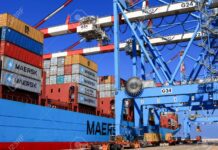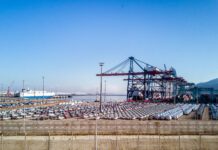The efficiency of supply chains has become the cornerstone of business success, especially as e-commerce markets across Europe continue to expand. The surge in online shopping has escalated the need for delivery methods that are not only faster but also more reliable and cost-effective.
Retailers, logistics providers, and supply chain professionals face increasing pressure to shorten delivery times while managing costs effectively and maintaining exemplary service standards. Achieving this complex balance demands a thorough understanding of supply chain dynamics and a strong commitment to continual innovation.
To excel, businesses must implement strategic measures that streamline operations, from automating inventory management to optimising logistics routes. These efforts enhance customer satisfaction and strengthen a company’s competitive edge in a bustling market.
Keep reading as we explore the crucial elements of supply chain optimisation in the e-commerce sector, examining the role of technology, overcoming delivery challenges, embracing sustainability, and more.
The Transformative Power Of Technology
Technology has revolutionised supply chain management, elevating it from a traditional logistical challenge to a strategic business asset. With the advent of advanced software and automated systems, businesses now enjoy enhanced visibility and control over every component of the supply chain, from inventory management to order fulfilment.
Integrating RFID tags, GPS tracking, and IoT devices provides real-time data that enables businesses to monitor inventory levels accurately, track shipments effectively, and predict potential delays. These technologies facilitate proactive supply chain management, allowing companies to respond swiftly to disruptions.
Moreover, machine learning algorithms enhance supply chain efficiency by forecasting demand, optimising delivery routes, and predicting future disruptions. This predictive capability allows businesses to adapt their strategies in anticipation of market changes.
Additionally, warehouse automation, including robotic picking and packing systems, significantly speeds up the fulfilment process and minimises human error. By embracing these technological advancements, companies can boost their operational efficiency and enhance service quality, reducing costs and improving customer satisfaction. Harnessing the power of technology transforms supply chains into dynamic, responsive elements of the business, which is crucial for maintaining a competitive advantage in the fast-paced world of e-commerce.
Overcoming The Challenges Of Last-Mile Delivery
Within almost every industry, companies have to overcome challenges. Last-mile delivery is often the most complex and costly of the e-commerce supply chain. This final step of getting products from local delivery centres into customers’ hands is fraught with challenges, including traffic congestion, address inaccuracies, and increasing demands for same-day delivery.However, innovative solutions are emerging to address these issues. For instance, dynamic routing software can adjust delivery routes in real-time, considering traffic conditions, delivery windows, and vehicle capacity. Not only this but access to local delivery networks and micro-fulfilment centres can help reduce distances and delivery times.
Companies are also exploring alternative delivery methods, such as drones and autonomous vehicles, to enhance efficiency and reduce costs. Tackling the last-mile delivery challenge head-on enables e-commerce businesses and supply chain professionals to significantly improve customer satisfaction and loyalty.
Embracing Sustainability
Without a doubt, sustainability has become a critical focus for supply chains worldwide, particularly in the e-commerce sector. Consumers increasingly prioritise environmentally friendly products and services, pushing companies to reevaluate their supply chain practices.
The journey towards sustainability begins with reducing waste and carbon emissions. Many e-commerce businesses are adopting greener packaging solutions, such as biodegradable materials, and optimising delivery routes to minimise fuel consumption. Investing in renewable energy sources for warehouses and distribution centres can also significantly reduce a company’s carbon footprint.
Another strategy is the circular supply chain model, which emphasises the reuse and recycling of products and materials, extending the lifecycle of resources. By integrating these sustainable practices, companies contribute to environmental health and build a positive brand image that resonates with eco-conscious consumers, fostering customer loyalty and trust.
Adapting to Evolving Consumer Expectations
Achieving success in the supply chain fundamentally hinges on adapting to evolving consumer expectations. Within the dynamic environment of online retail, customers expect a seamless shopping journey—from the initial browse through to the final unboxing, with demands for swift, free, or competitively priced delivery now standard.
To meet these expectations, e-commerce businesses and supply chain providers must adopt advanced fulfilment strategies. Providers like Zendbox, for instance, utilise sophisticated fulfilment solutions to ensure that orders are processed, packed, and dispatched with precision and speed. Furthermore, transparency throughout the delivery process is increasingly important. Consumers value the ability to track their orders in real-time and appreciate flexible return policies, which enhance their sense of security and trust in the brand.
By focusing on these critical aspects of the fulfilment process, businesses can not only satisfy but exceed the current expectations of consumers. This commitment to meeting customer needs with adaptable, transparent, and efficient practices is crucial for maintaining relevance and competitiveness in the bustling online marketplace. Businesses that respond effectively to these consumer demands are better positioned to build lasting loyalty and achieve sustained growth.
The Power of Data Analytics
Data analytics has profoundly transformed the approach of e-commerce businesses and supply chain professionals to fulfilment. Companies can predict the demand more accurately by harnessing data to analyse customer behaviour, purchase histories, and browsing patterns. This enables them to adjust stock levels precisely, ensuring they meet consumer needs without excess inventory that strains storage and logistics resources.
Such refined inventory management minimises waste and reduces costs, leading to a leaner, more effective supply chain. Additionally, data analytics supports personalisation strategies, with tailored product recommendations that boost sales and enhance customer loyalty by responding directly to individual consumer preferences.
Moreover, predictive analytics is crucial for logistical planning. It allows companies to foresee potential disruptions and adapt their operations proactively. By adjusting capacity according to anticipated fluctuations—scaling up during peak periods and down during slower times—businesses can sustain high service levels while avoiding unnecessary expenditures.
Building Resilient Supply Chains
Building resilience within supply chains has become more critical, especially following global disruptions like the COVID-19 pandemic. A resilient supply chain is characterised by its ability to withstand disruptions and continue operations with minimal impact on service quality.
One key strategy for building resilience is diversifying suppliers and logistics partners. Companies can mitigate risks from geopolitical tensions, natural disasters, or other unexpected events that might disrupt the supply chain by not depending solely on a single source or route.
Integrating technology is also vital for resilience. Automated systems and artificial intelligence enhance the real-time management and rerouting of orders, thus minimising delays. Furthermore, investing in local fulfilment centres can reduce reliance on extended supply chains, enabling quicker responses to shifts in consumer demand and external pressures. This strategic placement of resources helps maintain steady supply chain operations even when faced with challenges, ensuring that customer expectations are consistently met.
The Bottom Line
The efficiency and resilience of supply chains are not just operational concerns but strategic imperatives that determine a business’s ability to meet consumer expectations and sustain growth. By embracing the power of technology, data analytics, and sustainable practices, companies can streamline their supply chain operations, enhance the customer experience, and build a competitive advantage in the dynamic e-commerce landscape.
As the industry continues to evolve, the capacity to innovate and adapt will define success. From overcoming the challenges of last-mile delivery to building resilience against unforeseen disruptions, the strategies discussed here offer a roadmap for e-commerce excellence in the years to come.









































